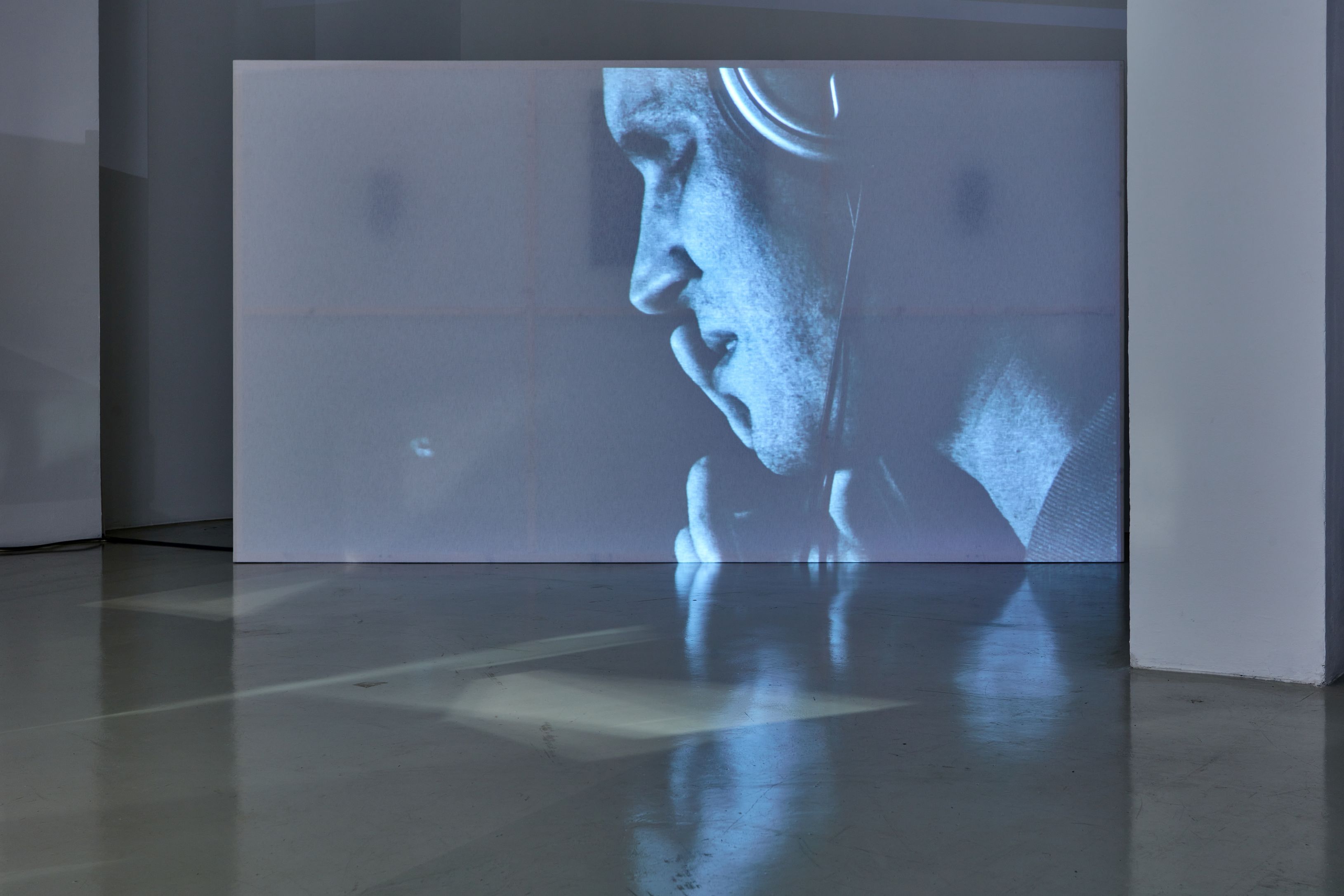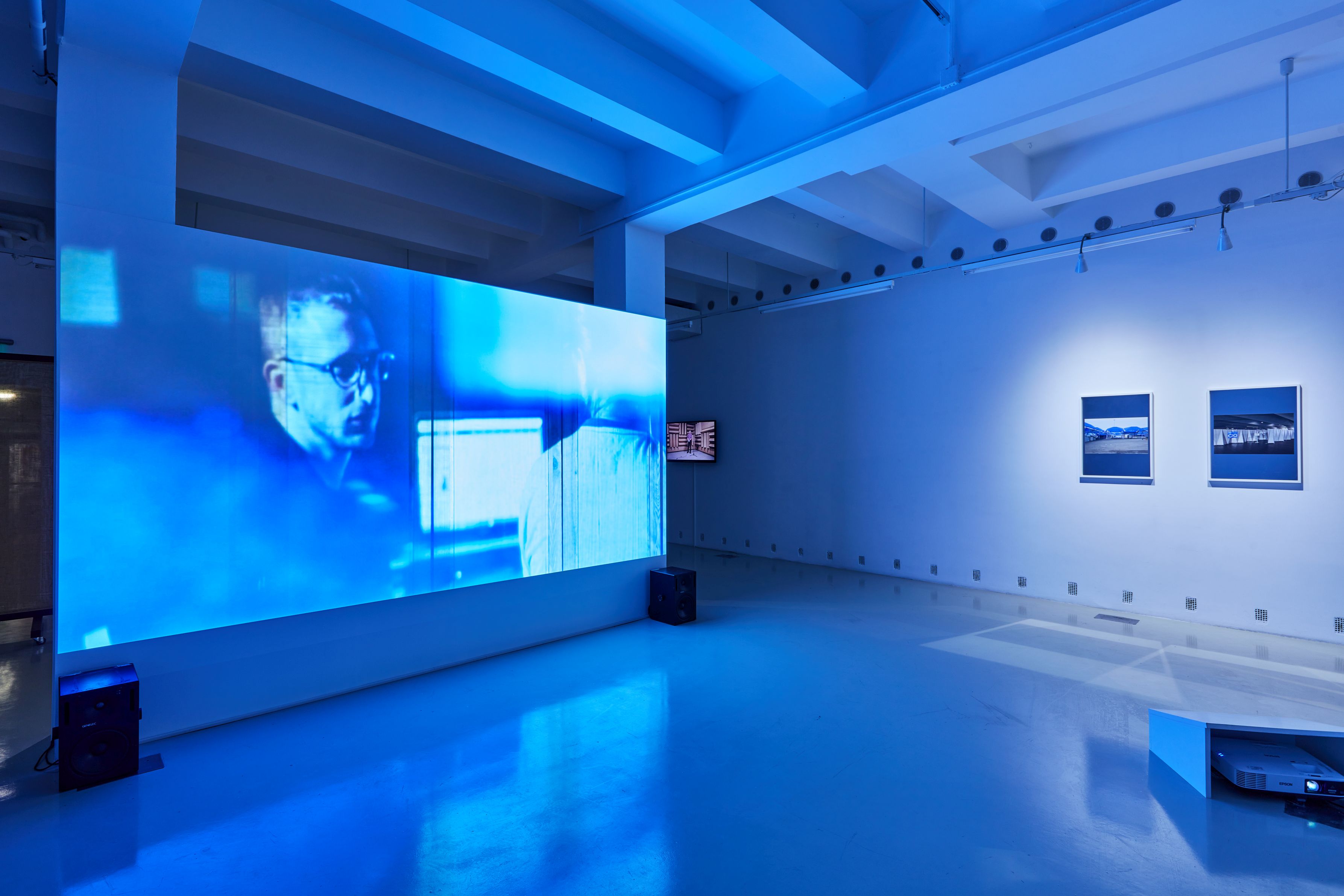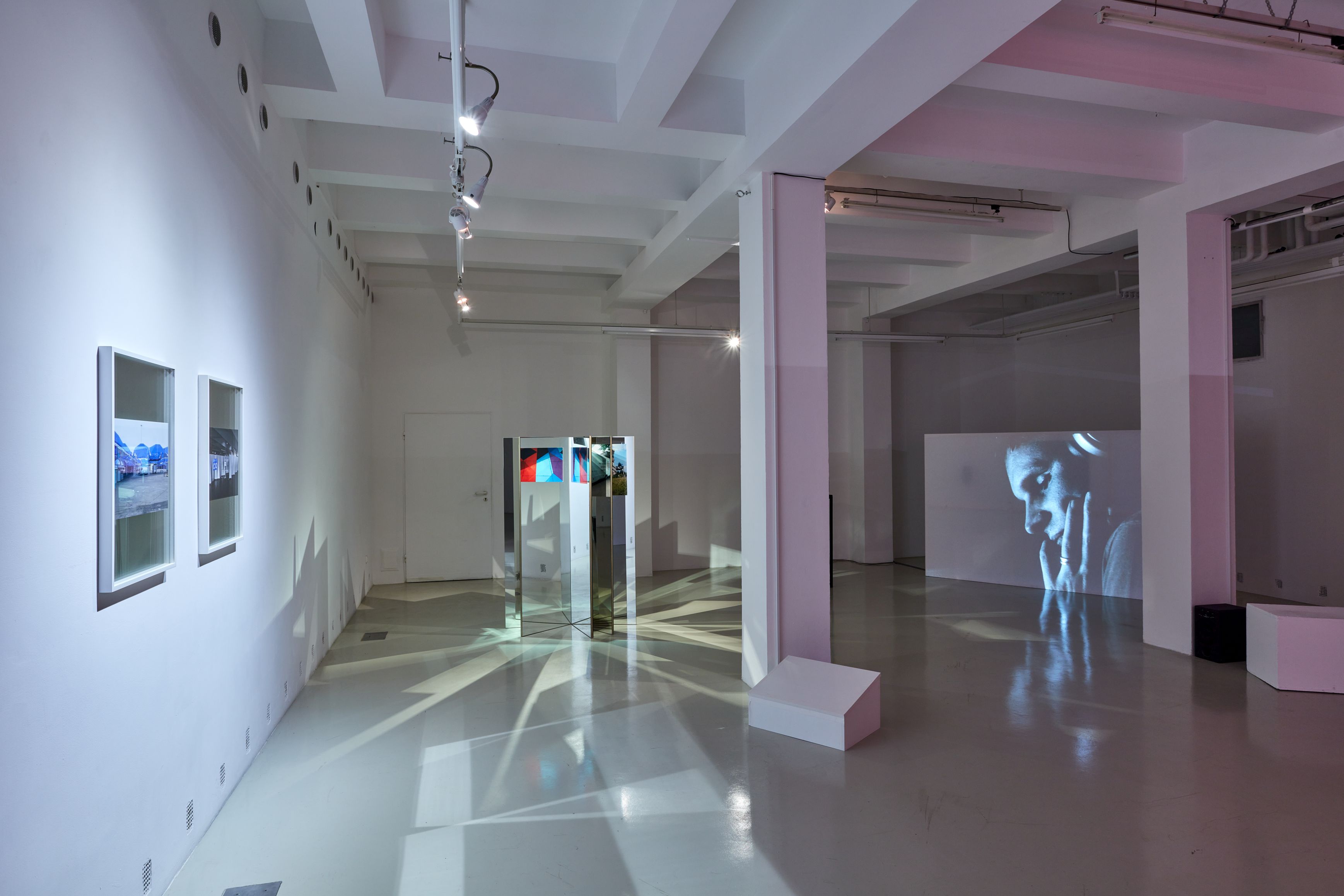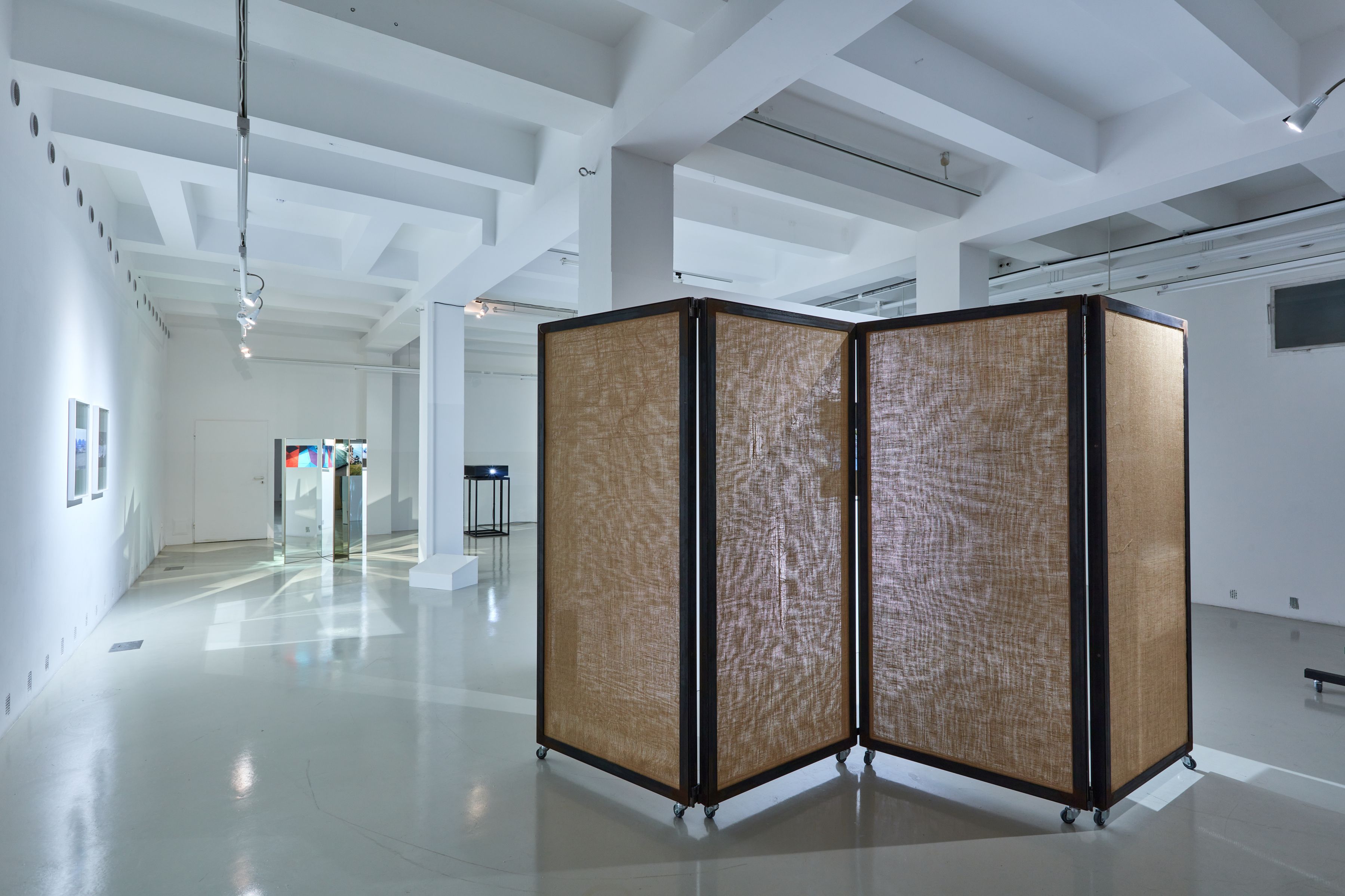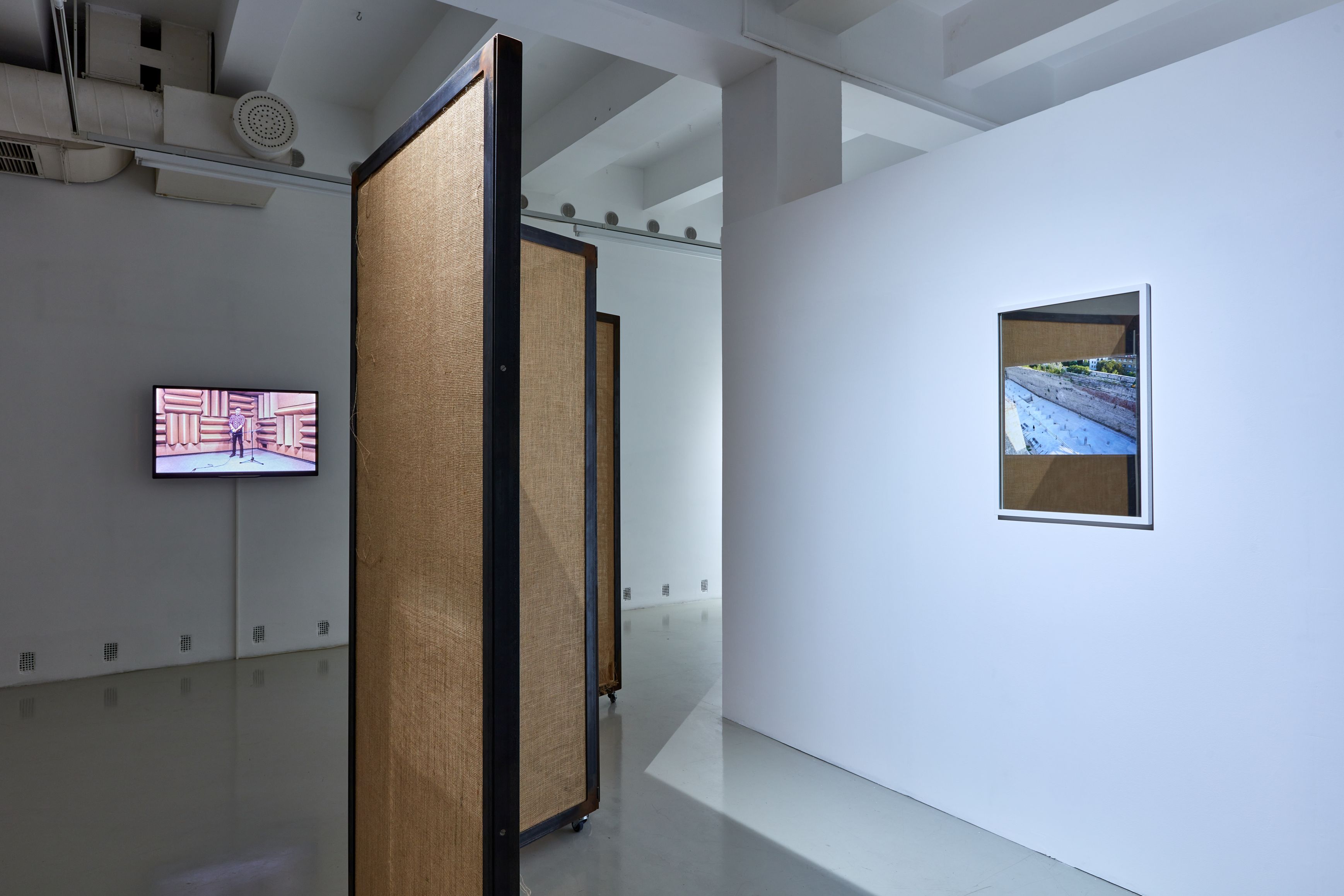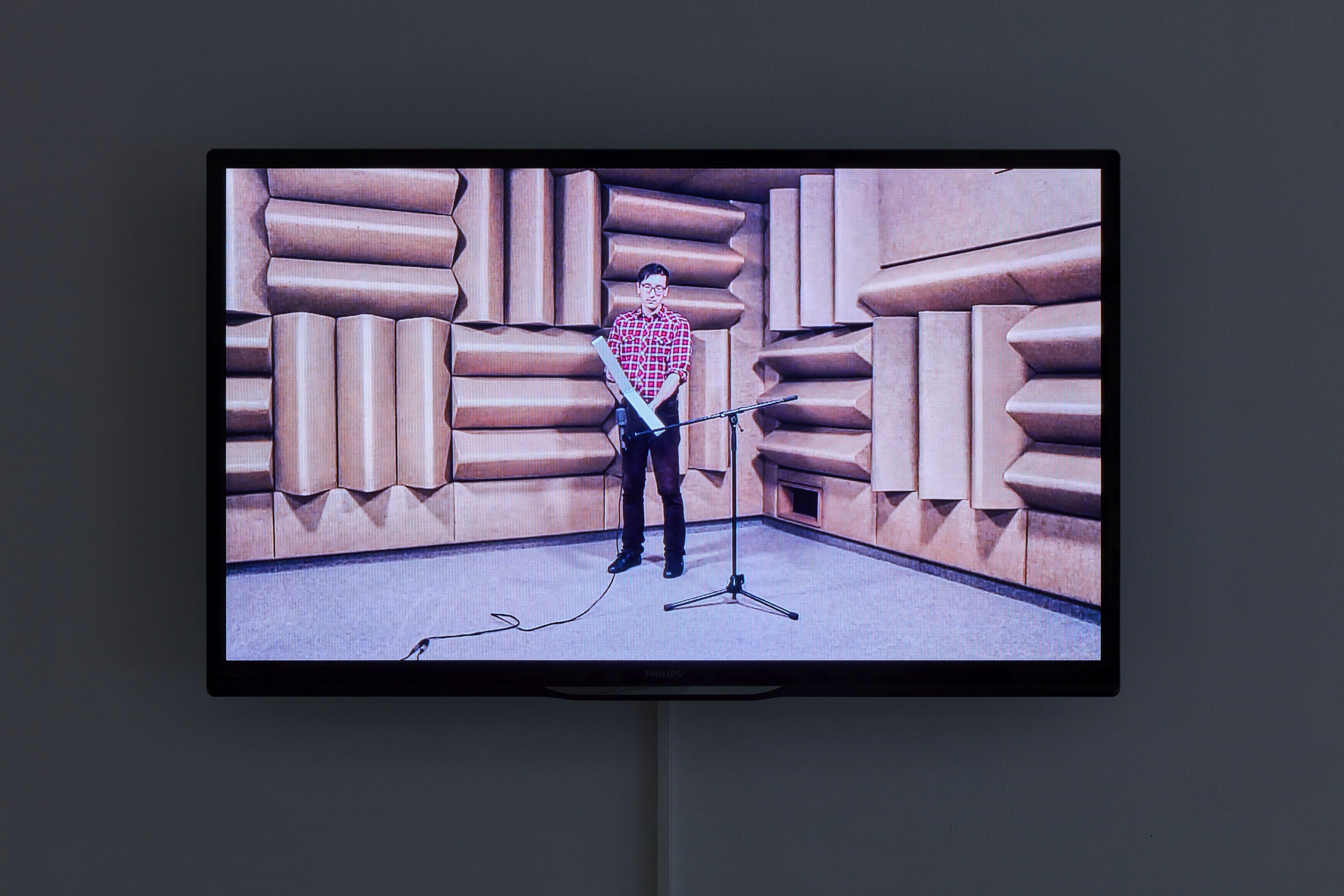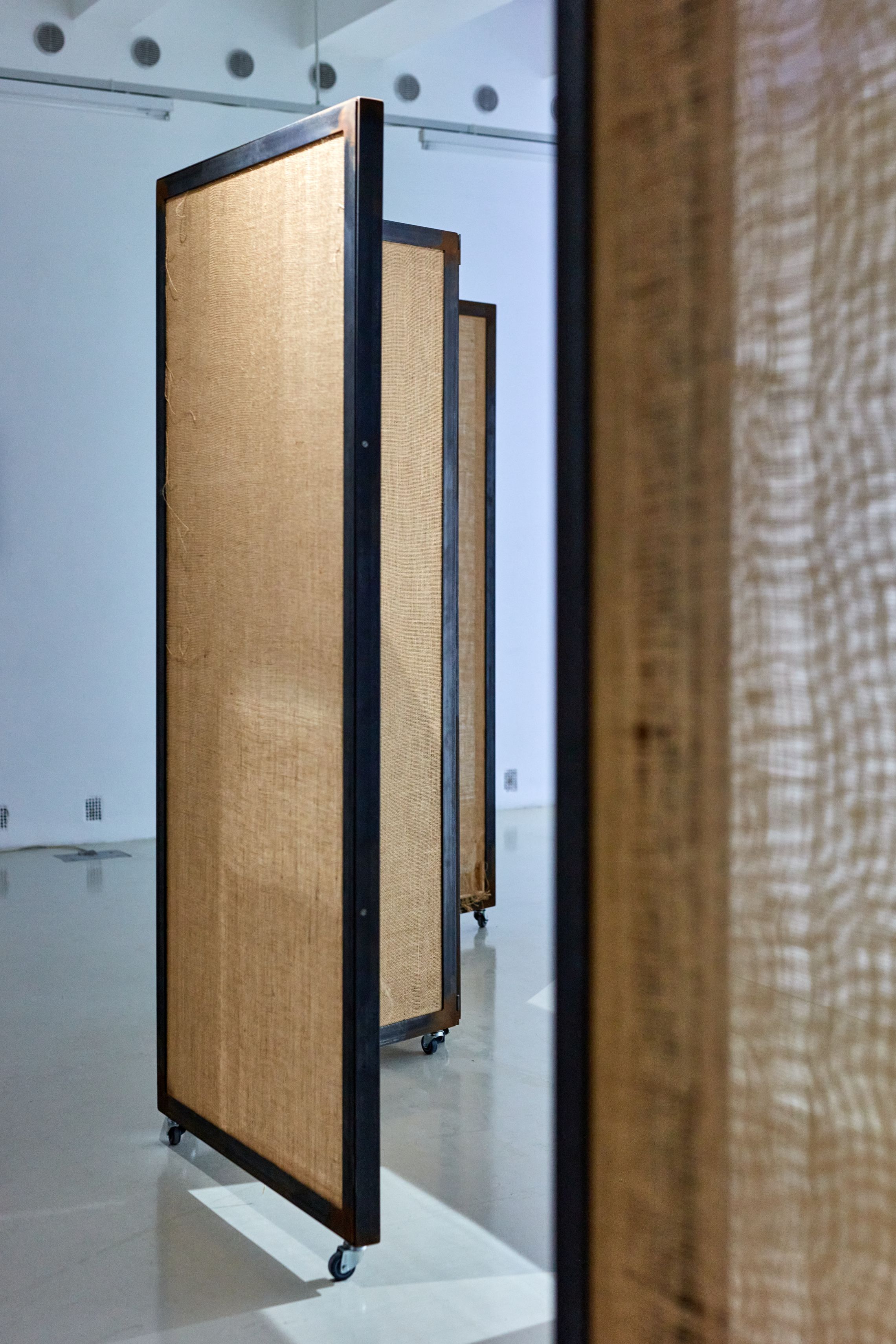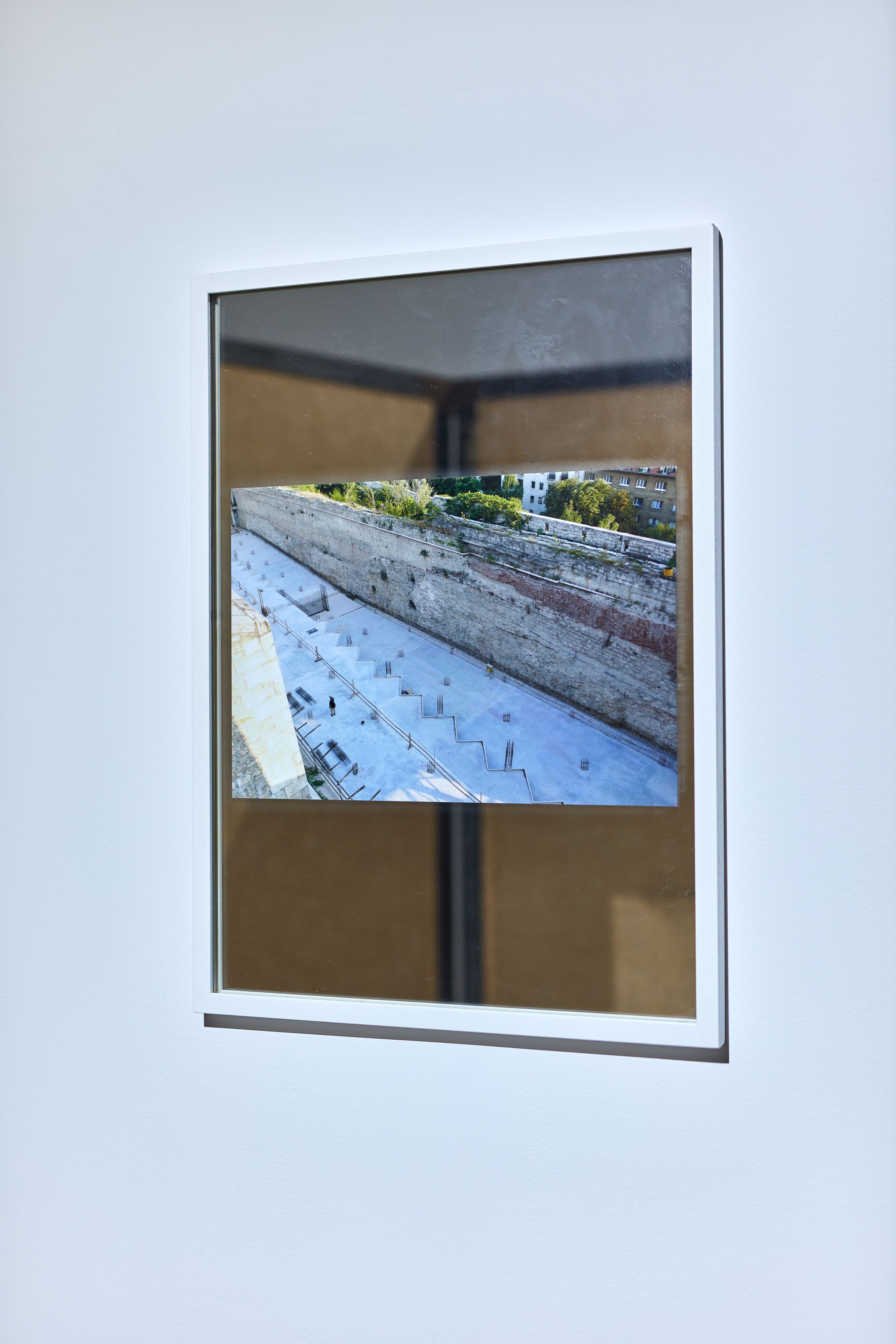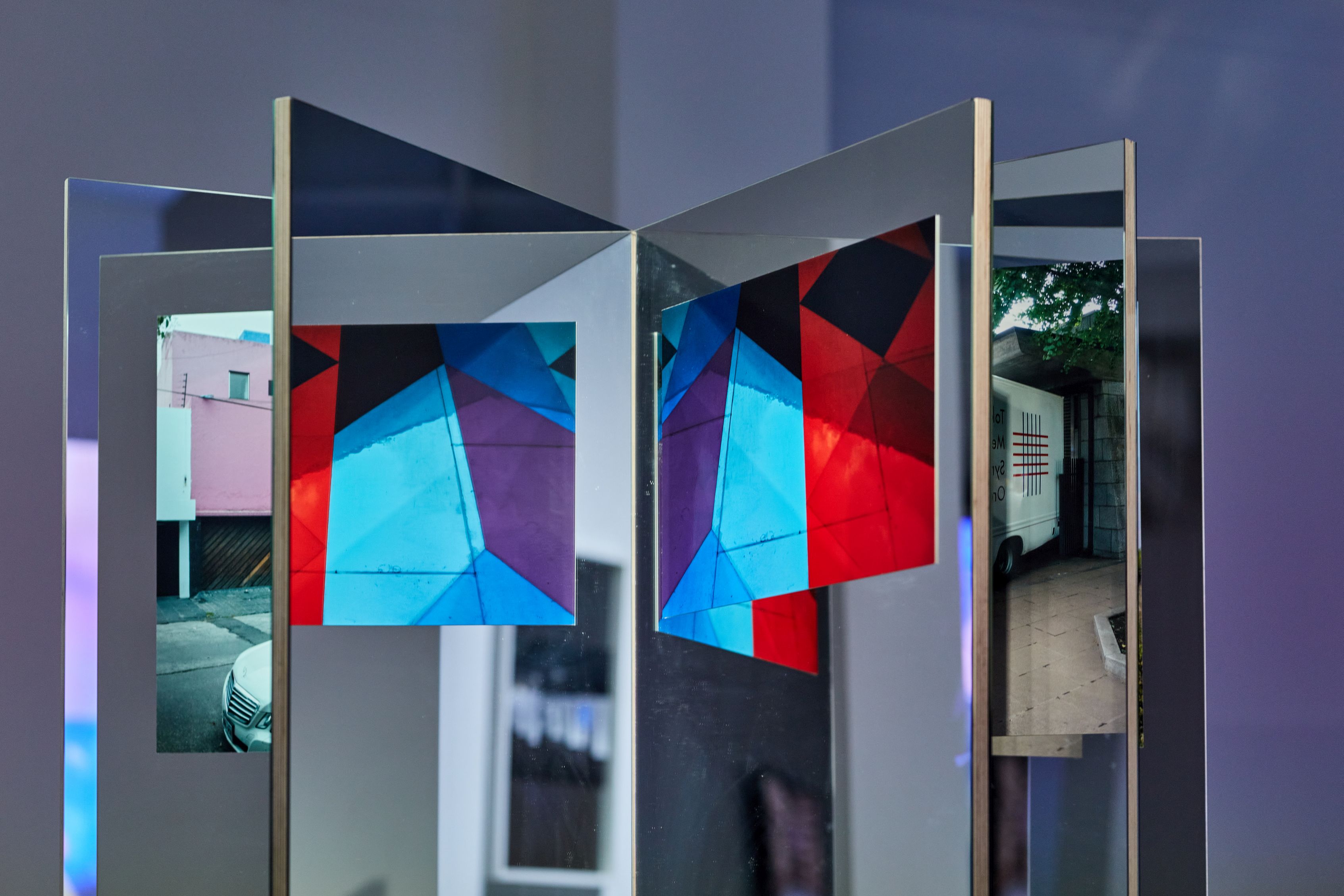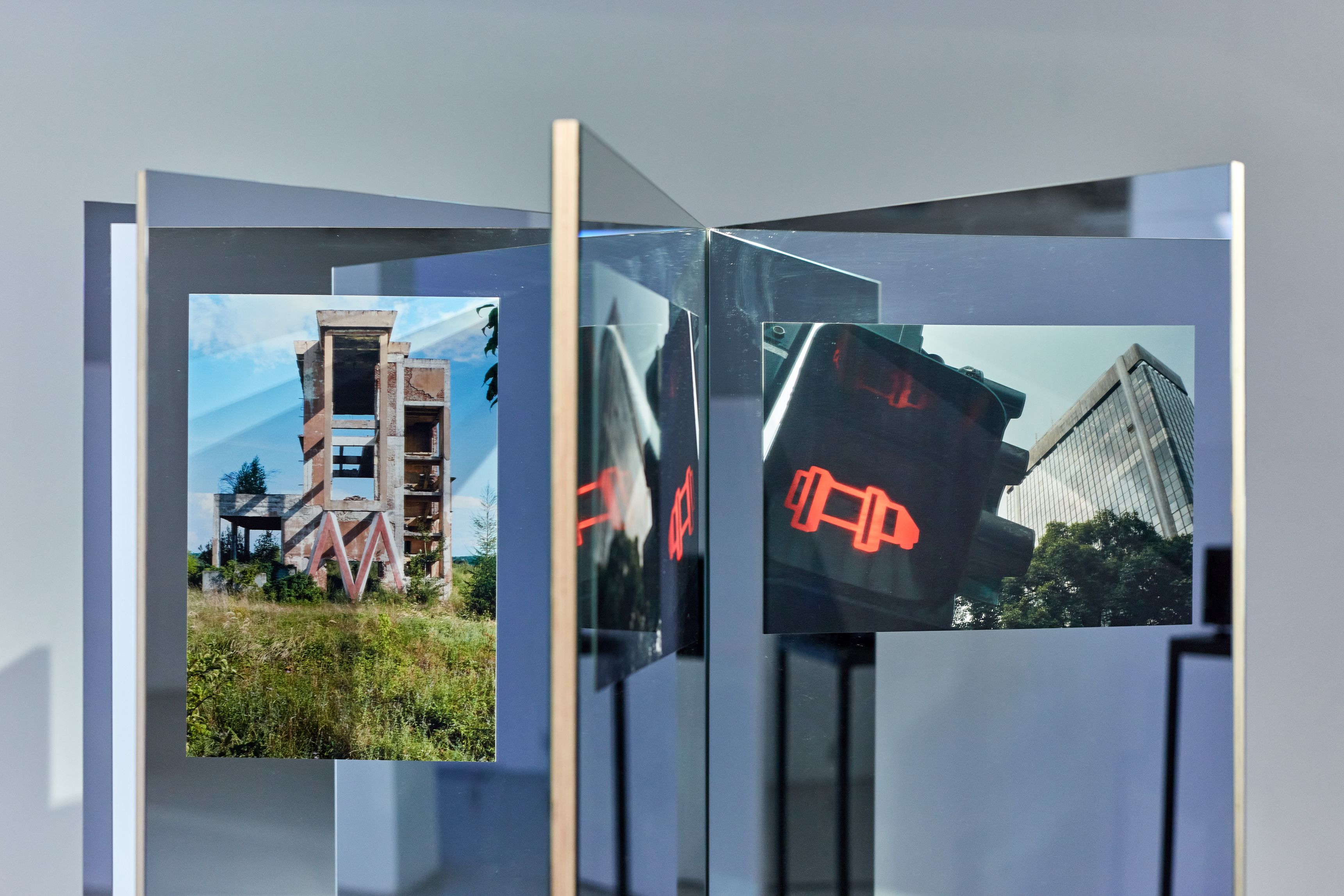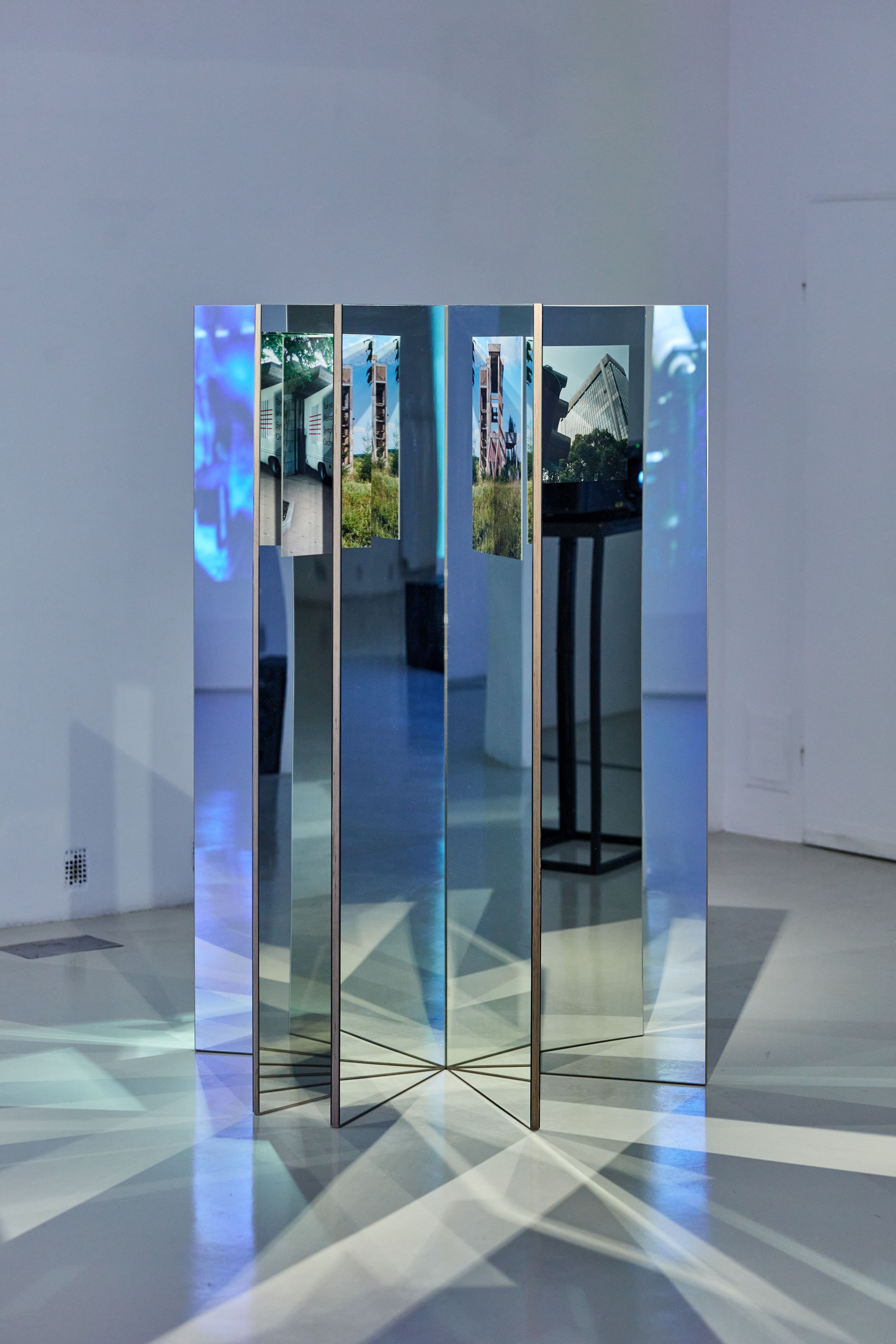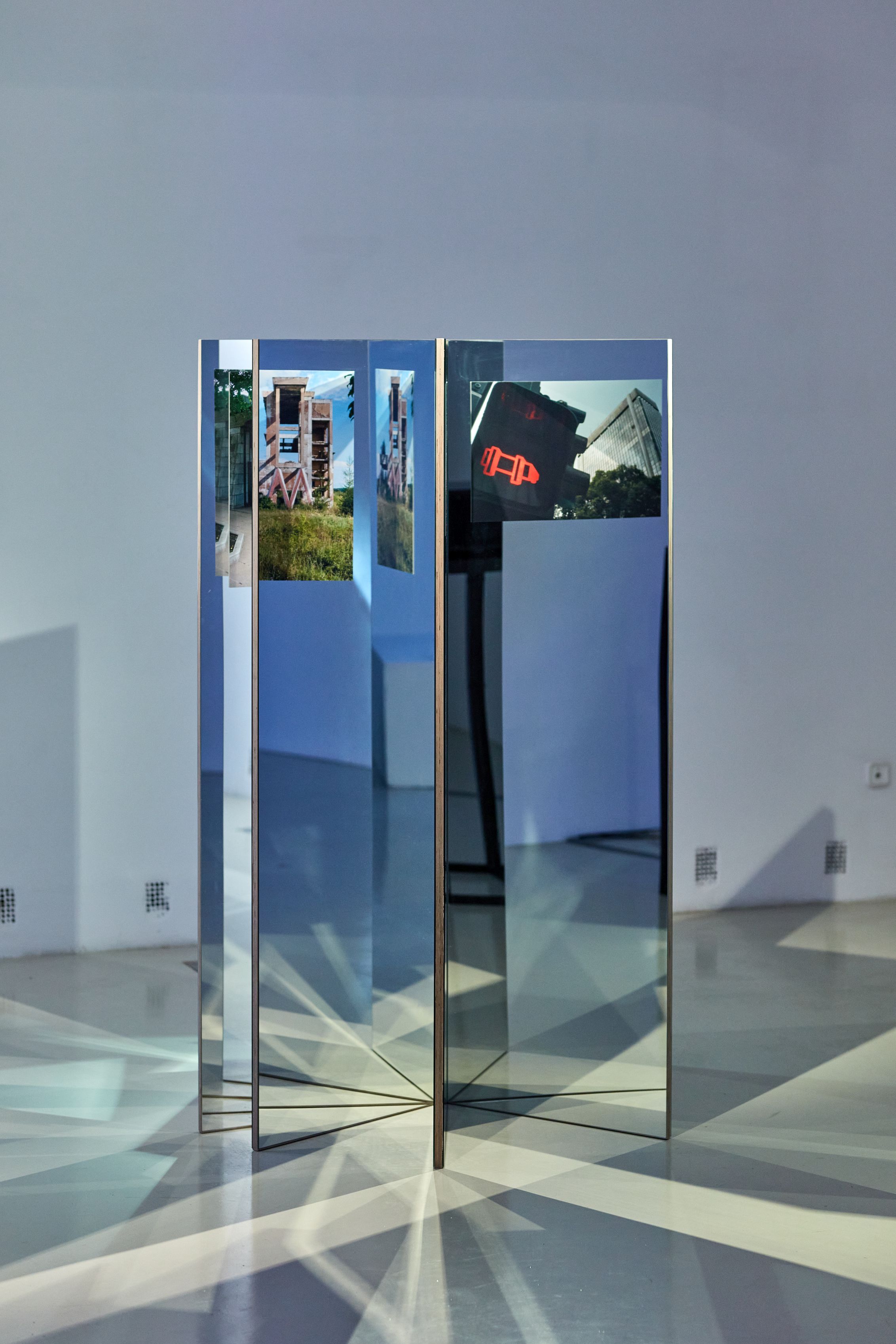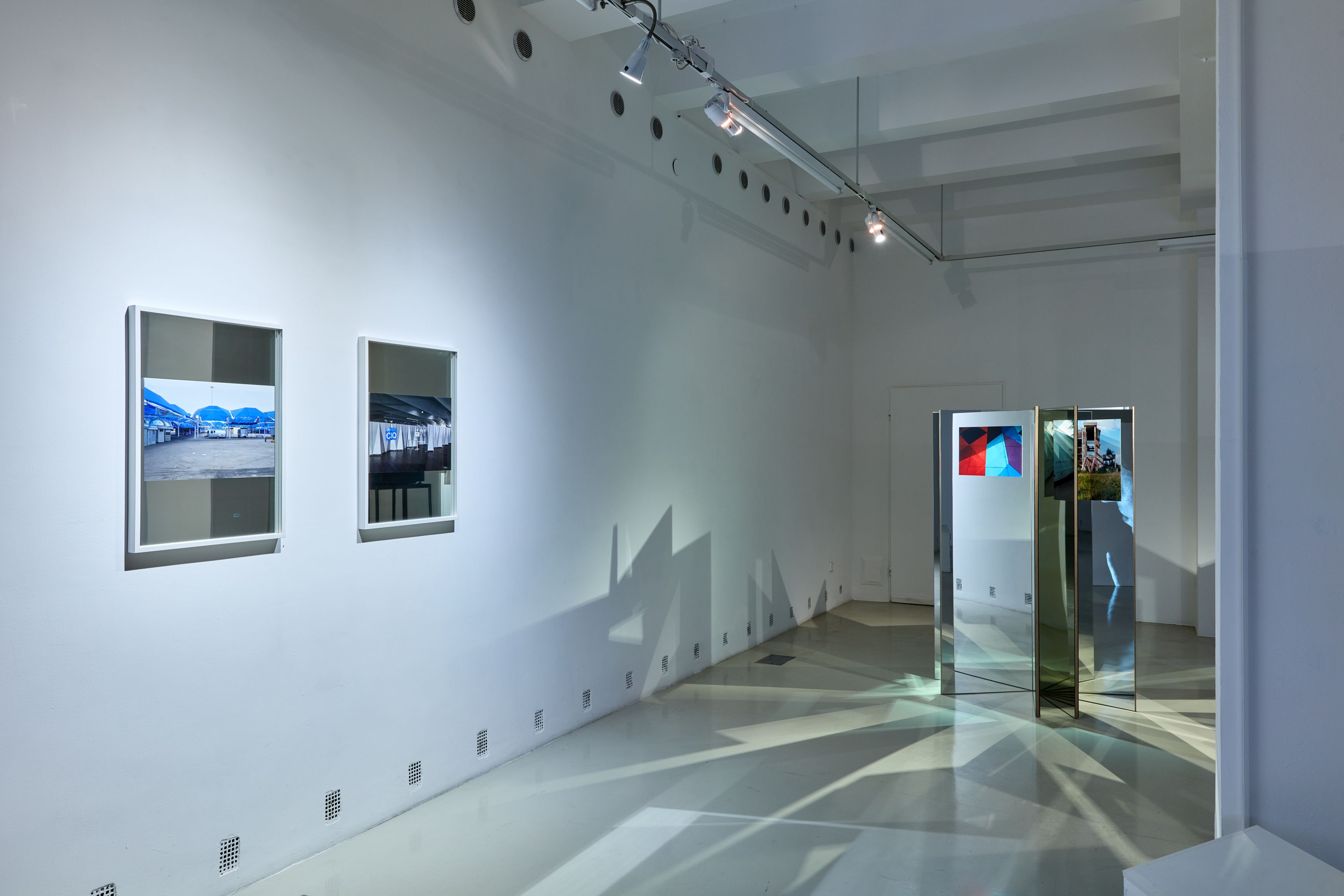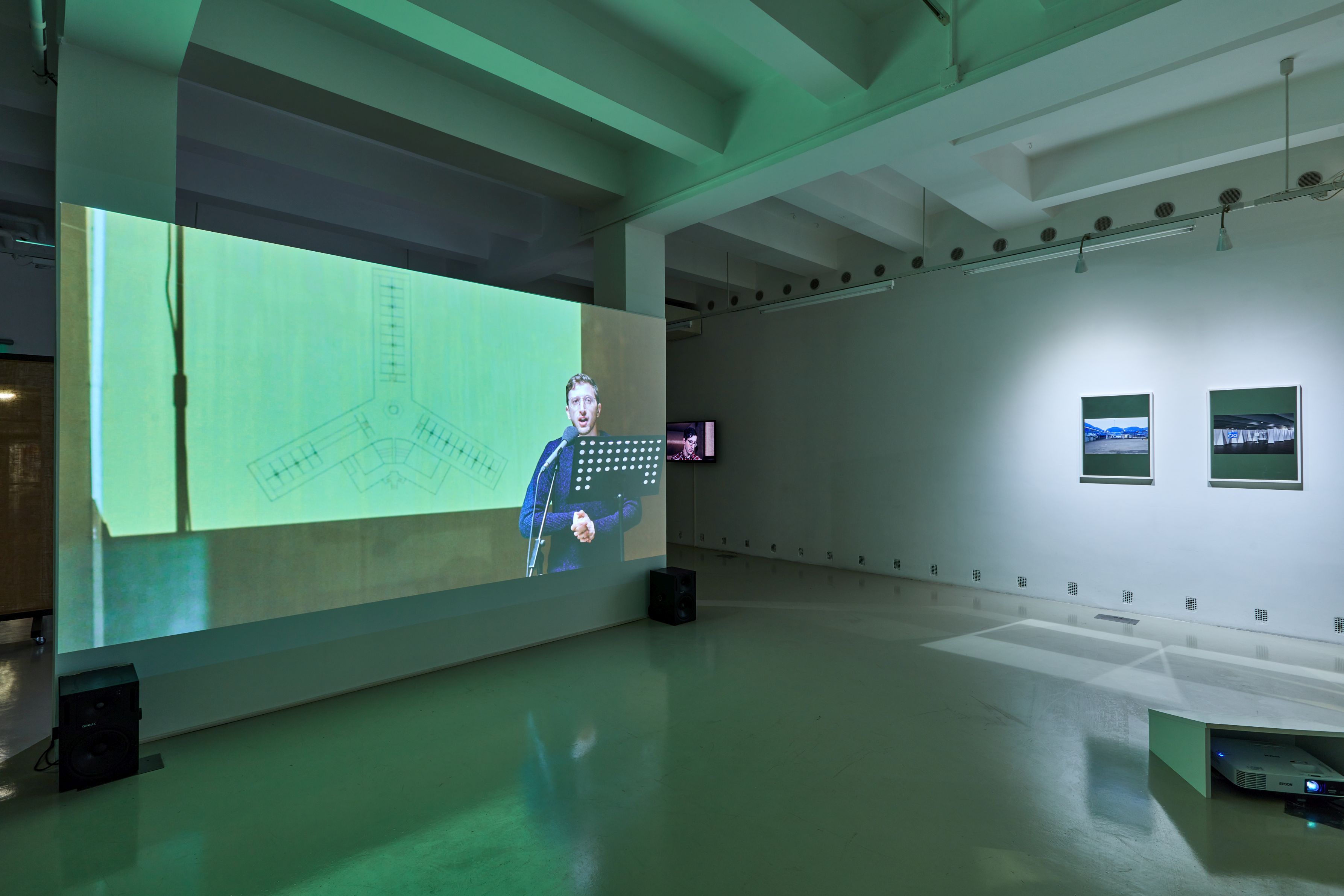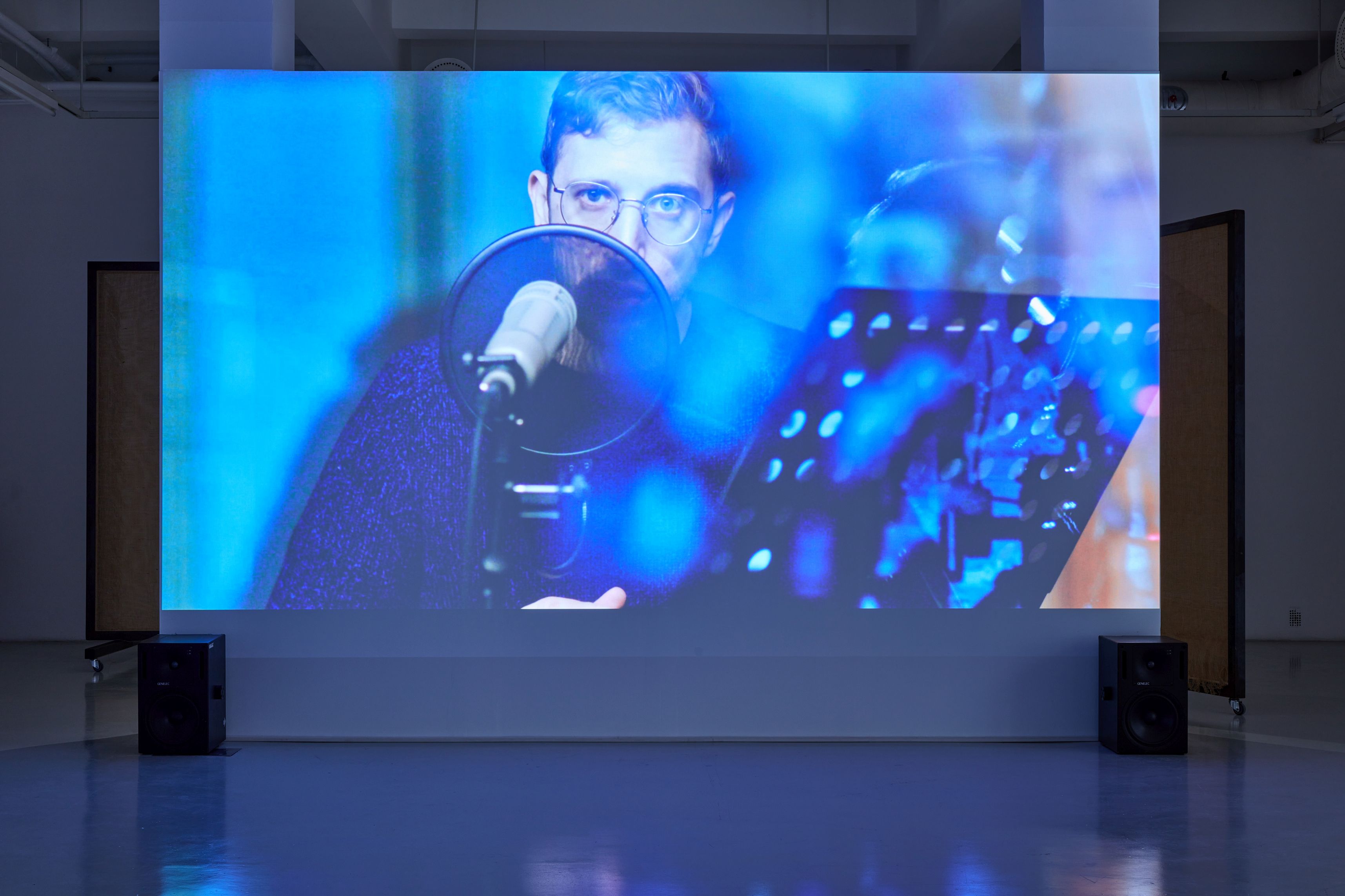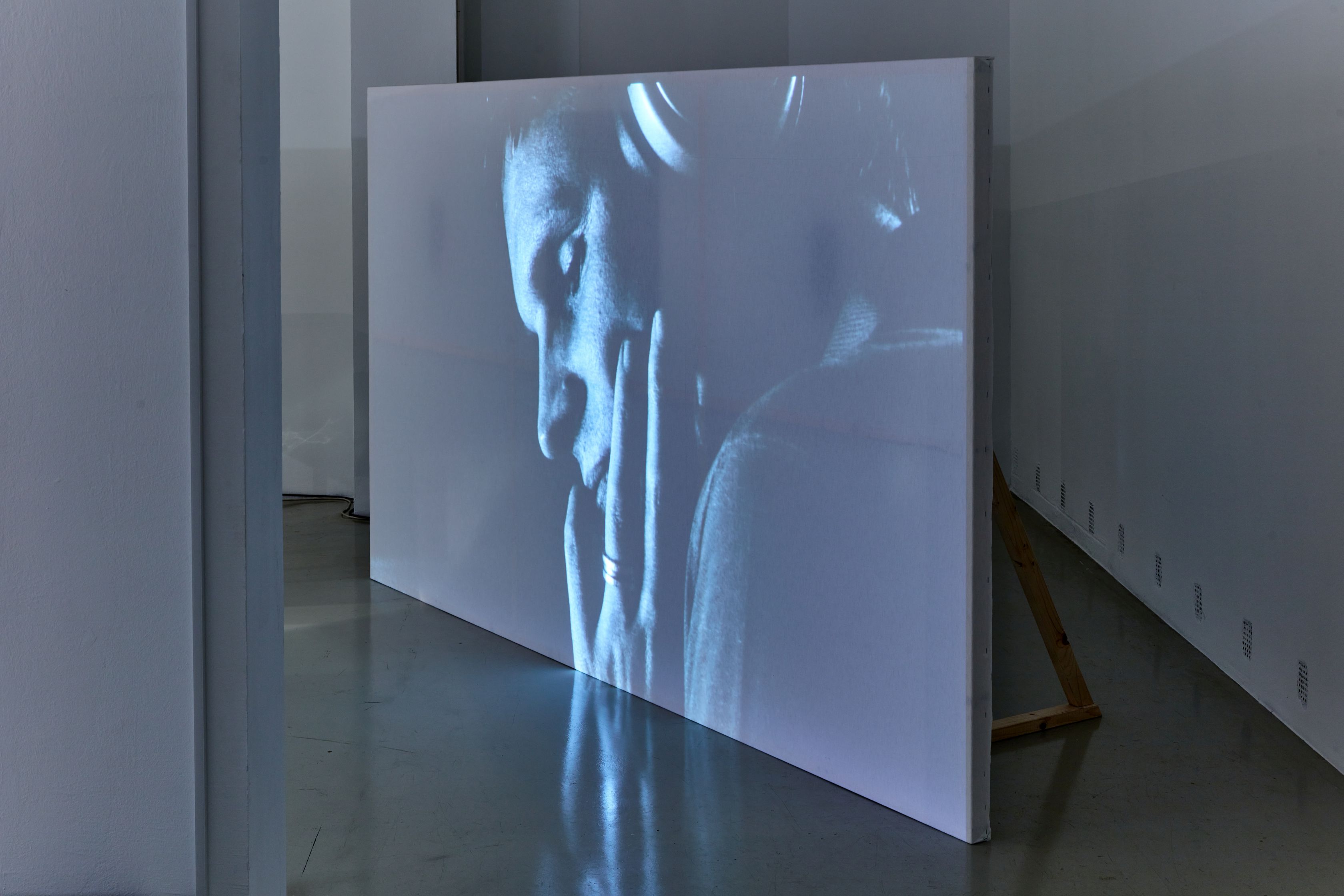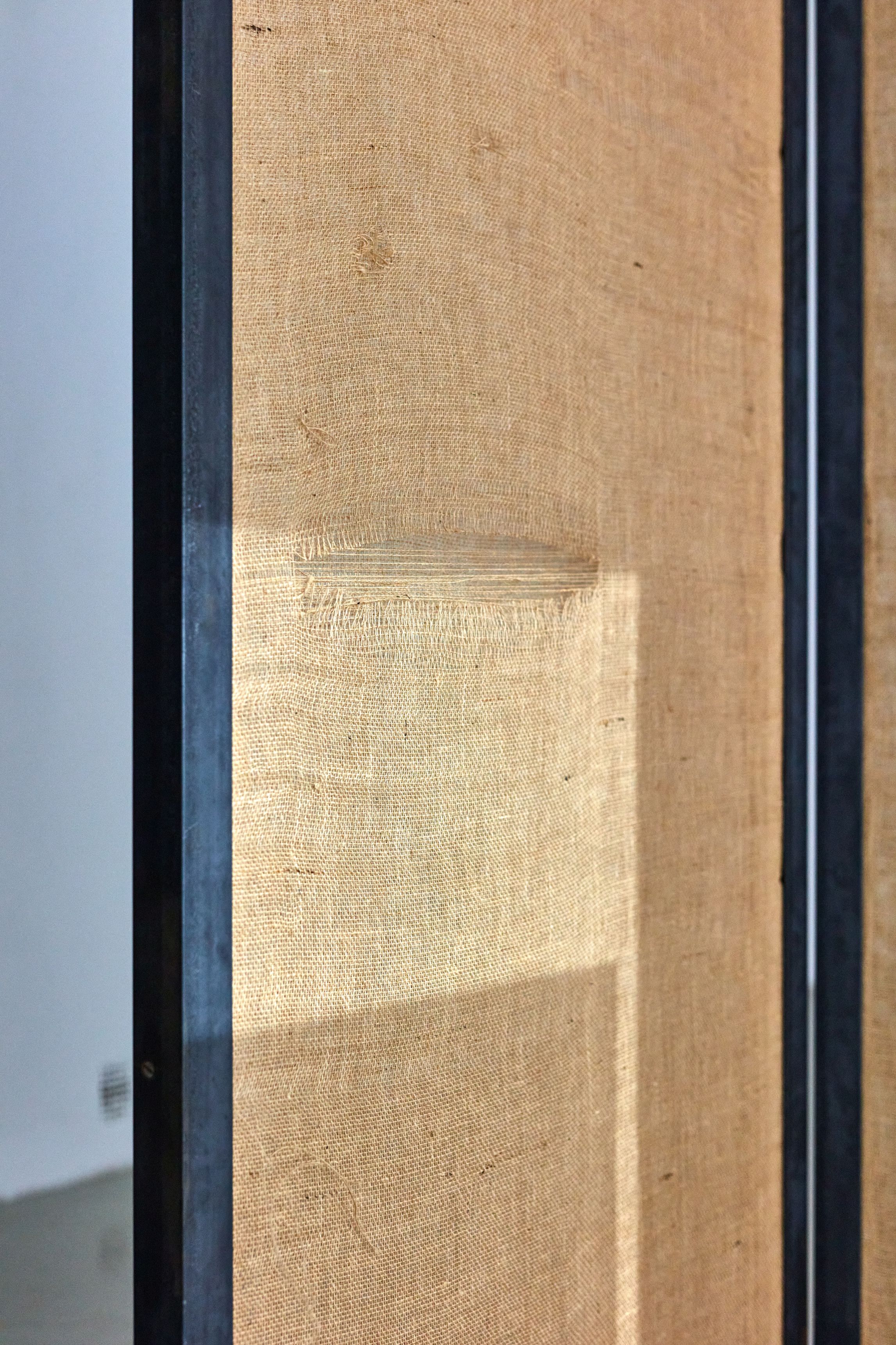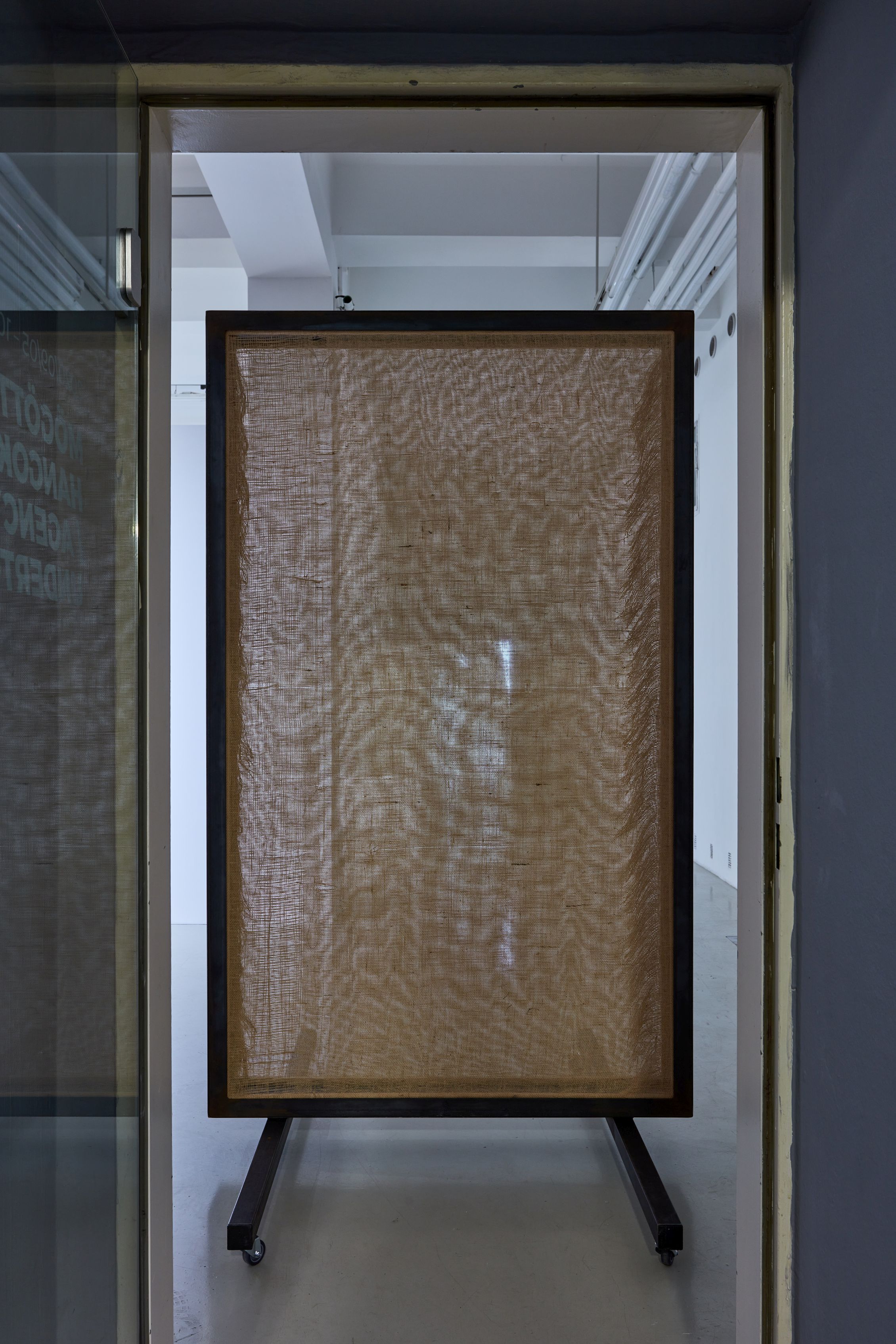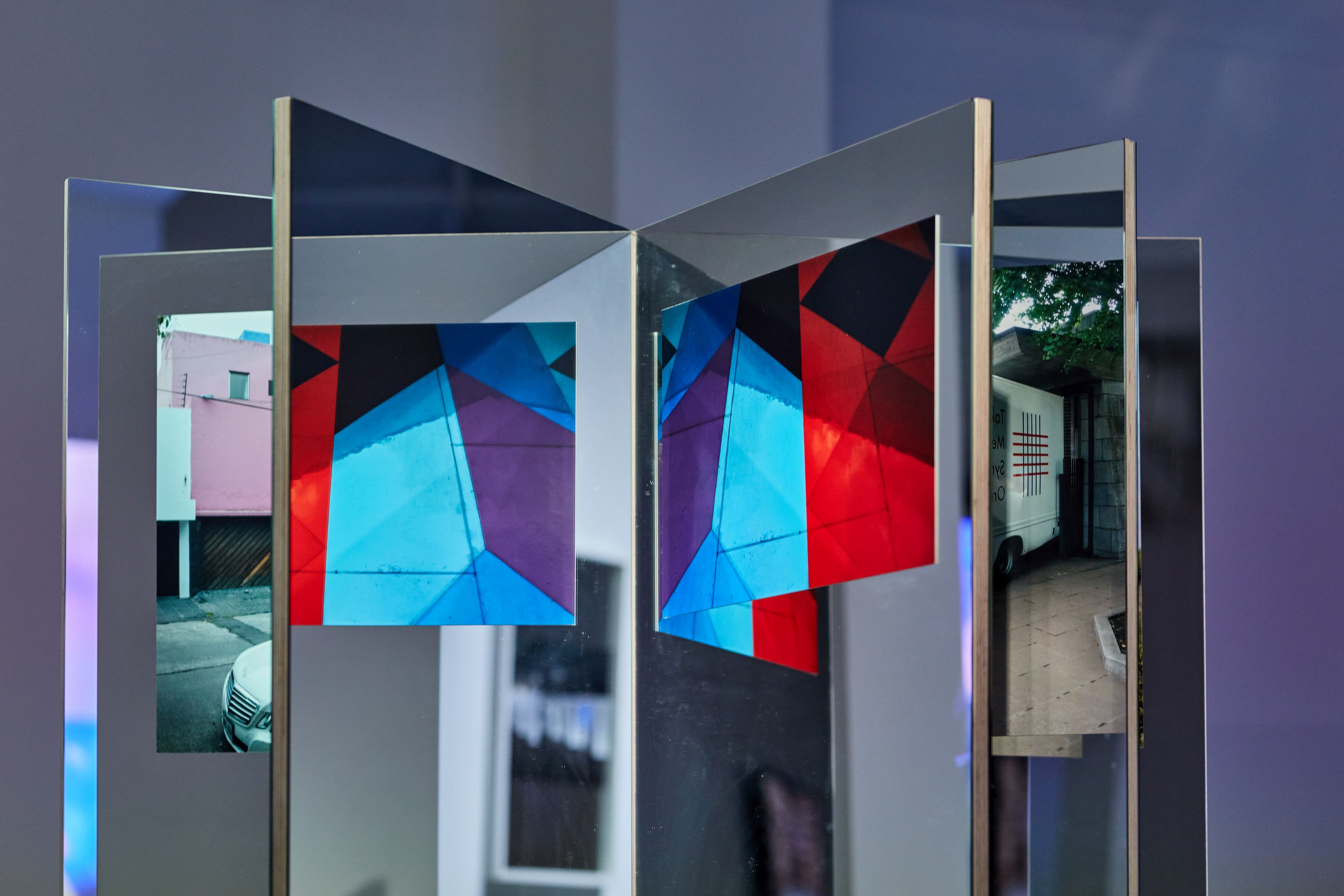Artists: Lawrence Abu Hamdan, Andreas Fogarasi, Roman Štětina, Imogen Stidworthy
Title: Agency of Undernotes
Venue: Trafó Gallery, Budapest
Curator: Borbála Szalai
Photo: Dávid Bíró

My only weapon is listening. Listening, in which the power of silence meets the potential of attention to the audible layers. Listening, which is able to reveal what extends beyond the visible layers and to perceive sounds and voices that are masked, hardly accessible or silenced. The leaking noise of suppressed gunshots and beatings, the barely detectable rumbling of violence, of abuses of power and of distorted facts as well as sounds that resist the limiting force of walls or fences.
Trafó Gallery provides space for these sounds and for a kind of attention that is focused on the underlying layers that filter through surfaces. It is this kind of attention that distinguishes hearing from listening, sounds from undertones, and that leaves room for concealed truths and hidden intentions and tunes in to the vibrations of subdues sounds and silences.
The protagonist of the video work entitled Sacha (Listening) by Imogen Stidworthy is Sacha van Loo, who works for the Antwerp police and, having been blind since birth, he has highly-developed echolocation skills. He is fluent in seven languages and recognizes several accents and dialects. Sacha puts down and analyses voice recordings made during the surveillance of suspects via telephone: he searches for unspoken intentions and undertones hidden behind spoken worlds, as well as information concealed by utterances, language codes, inflexions and in-between the layers of audible sounds. Sacha’s focused attention and particularly sensitive attitude to the hidden dimension of voices is thus able to identify certain subjects involved in a crime or to provide evidence for a legal case.
Similarly to Stidworthy’s video, in Lawrence Abu Hamdan’s work, the boundaries between private and public space also become increasingly blurred. In his performance-video Walled Unwalled, the walls cease to be real frontiers: neither the walls of a house or a room, nor a thick prison wall that seems impenetrable, can stop the information transmitted by sound waves and vibrations that pass through them, which can even serve as conclusive evidence in legal cases. One of the cases cited in the video is based on acoustic investigations of a Syrian prison building and on testimonies of former detainees under forced interrogation. This prison, like many other prisons built in the 60s and 70s around the world, can be traced back to the prison architecture archetype developed by the GDR, in which the reverberation of sound within the building plays a central role and assists the surveillance of prisoners.
In addition to carceral environments, the acoustic-architectural innovations of the GDR have also been implemented in the design of radio buildings and radio studios. An example of this is one of the radio studios in Berlin’s Funkhaus building, that also appears in Abu Hamdan’s video work. The GDR Radio (Rundfunk der DDR) operated in this building at the time, but the propaganda broadcast from here was not only aimed to the eastern side, but spoke in double directions, as the signal could also be received on the western side of the wall.
Roman Štětina’s video work was shot in another significant radio building of the Eastern Bloc, that of the Czech Radio in Pilsen. The Pilsen Radio Building was the first facility in Eastern Europe built specifically for the purposes of radio broadcasting. The studios, which were designed in the mid-1940s but inaugurated only in 1956, were already considered technologically obsolete when they were completed, because with the advent of audio tapes, the voices of the different characters could be recorded and edited separately, so it was no longer necessary for all the performers and technicians to be present in a studio space simultaneously. The video features an actor who presents one of the studio’s archaic props
called a “flap” or sometimes “whip” with a sound imitating a rifle shot. Štětina creates confusion between the audible and the visible, the real and the false by the simple gesture of exchanging the sound of the „flap” for the sounds of real gunshots from a sound effect data bank.
Andreas Fogarasi’s works contemplate on upper layers and coverings. With the subtle and delicate attention characterizing his practice, he not only observes but also sees through these surfaces. His photographs depict seemingly ordinary environments, yet they also reflect the structures hidden beneath these exteriors and the processes by which a certain group represents itself, and seeks to shape, transform, disguise, or obscure certain elements of reality.
